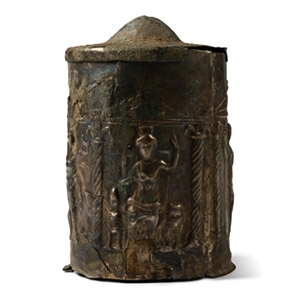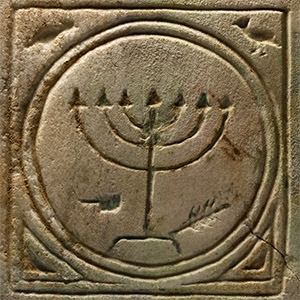Home > Auctions > 4 - 9 March 2025
Ancient Art, Antiquities, Books, Natural History & Coins
From the Fadel family collection, London, UK, 1970s.
This lot is accompanied by an illustrated lot declaration signed by the Head of the Antiquities Department, Dr Raffaele D’Amato.
Cf. West, N., 'Gods on Small Things: Egyptian Monumental Iconography on Late Antique Magical Gems and the Greek and Demotic Magical Papyri,' in Smith, A.C., Bergeron, M.E. (eds.), The Gods of Small Things, Pallas 86, Toulouse, 2011, p.160, fig. 30g, for a gem with a standing Sobek; Kockelmann, H., Der Herr der Seen, Sümpfe und Flußläufe 1, Wiesbaden, 2017, pp.96-97, for discussion of the crowns worn by Sobek.
The primary centres of worship for Sobek during the Roman Period were Medinet el-Fayum (ancient Shedet) in the Fayum region and Kom Ombo in Upper Egypt, where live crocodiles were kept within the temple precincts. Sobek was associated with other deities and the pharaoh, symbolising procreative and vegetative fertility, as well as strength and power.
From the Fadel family collection, London, UK, 1970s.
This lot is accompanied by an illustrated lot declaration signed by the Head of the Antiquities Department, Dr Raffaele D’Amato.
Acquired 1970-1999.
Property of a late London Mayfair gentleman, by descent.
Acquired on the UK art market.
Private collection, London, UK.
This lot is accompanied by an illustrated lot declaration signed by the Head of the Antiquities Department, Dr Raffaele D’Amato.
Acquired 1979-1999.
London collection of the late Mr S.M., thence by descent.
Acquired on the UK art market.
Private collection, London, UK.
This lot is accompanied by an illustrated lot declaration signed by the Head of the Antiquities Department, Dr Raffaele D’Amato.
Ex Cambridge, UK, collection, 1990s.
This lot is accompanied by an illustrated lot declaration signed by the Head of the Antiquities Department, Dr Raffaele D’Amato.
Ex Ancient Art, North London, UK.
From a collection acquired on the UK art market from various auction houses and collections mostly before 2000.
From an important Cambridgeshire estate; thence by descent.
This lot is accompanied by an illustrated lot declaration signed by the Head of the Antiquities Department, Dr Raffaele D’Amato.
Cf. similar item in the British Museum, London, under accession no.1995,0702.1.
Acquired by Albert Sfez in the early 1950s.
Formerly the property of Monsieur Alain Sfez, a Belgian collector; acquired by gift from his father Albert Sfez, in 1965.
Acquired by a London dealer in 1973.
From an important London collection since 1975; thence by descent.
This lot has been checked against the Interpol Database of stolen works of art and is accompanied by a search certificate number no.12525-230804.
This lot has been cleared against the Art Loss Register database, and is accompanied by an illustrated lot declaration signed by the Head of the Antiquities Department, Dr Raffaele D’Amato.
Cf. Rothenhöfer, Peter Jürgen Blänsdorf, Sana mente sanaque memoria testamentum feci: Eine testamentarische Verfügung vom 12. April 340 n. Chr., Gephyra 13 (2016), pp.153-163; Rothenhöfer, Peter - Wang, Weixia Flavius Aelius Victorinus praeses provinciae Numidiae, VDI 2025 (forthcoming); Wang, Wexia, Vibius Flavianus, First Governor of the provincia Valeria Byzacena, VDI 2025 (forthcoming); for examples of testamentary documents on wooden tablets that have survived, see FIRA III, p. 47; for Anthony Silvanus from 142 AD; also see BGU VII 1695 for Safinnius Herminus; for another from Transfynydd, North Wales, see Arch. Camb. 150, pp. 143-156; and see Bowman, A.K., Life and letters on the Roman frontier: Vindolanda and its people, London, 1994, for discussion of the uses of Roman writing tablets.
Rothenhoefer, P., Neue römische Rechtsdokumente aus dem Byzacena-Archiv / New Roman Legal Documents from the Byzacena Archive, (forthcoming). Exhibited at the Harwich Museum, Harwich, Essex, UK, 21st January-10th March 2025; accompanied by a copy of a photograph of the artefacts on display.
Acquired by Albert Sfez in the early 1950s.
Formerly the property of Monsieur Alain Sfez, a Belgian collector; acquired by gift from his father Albert Sfez, in 1965.
Acquired by a London dealer in 1973.
From an important London collection since 1975; thence by descent.
This lot is accompanied by an illustrated lot declaration signed by the Head of the Antiquities Department, Dr Raffaele D’Amato.
Cf. Rothenhöfer, Peter Jürgen Blänsdorf, Sana mente sanaque memoria testamentum feci: Eine testamentarische Verfügung vom 12. April 340 n. Chr., Gephyra 13 (2016), pp.153-163; Rothenhöfer, Peter - Wang, Weixia, Flavius Aelius Victorinus praeses provinciae Numidiae, VDI 2025 (forthcoming); Wang, Wexia, Vibius Flavianus, First Governor of the provincia Valeria Byzacena, VDI 2025 (forthcoming); for examples of testamentary documents on wooden tablets that have survived, see FIRA III, p. 47; for Anthony Silvanus from 142 AD; also see BGU VII 1695 for Safinnius Herminus; for another from Transfynydd, North Wales, see Arch. Camb. 150, pp. 143-156; and see Bowman, A.K., Life and letters on the Roman frontier: Vindolanda and its people, London, 1994, for discussion of the uses of Roman writing tablets.
Rothenhoefer, P., Neue römische Rechtsdokumente aus dem Byzacena-Archiv / New Roman Legal Documents from the Byzacena Archive, (forthcoming). Exhibited at the Harwich Museum, Harwich, Essex, UK, 21st January-10th March 2025; accompanied by a copy of a photograph of the artefacts on display.
Acquired in Germany in 2001.
Acquired by the present owner from the above.
Accompanied by an academic report by Dr Raffaele D’Amato.
This lot has been checked against the Interpol Database of stolen works of art and is accompanied by search certificate number no.12192-222323.
This lot has been cleared against the Art Loss Register database, and is accompanied by an illustrated lot declaration signed by the Head of the Antiquities Department, Dr Raffaele D’Amato.
For a similar sandaled foot of goddess Tutela see Boucher, S., Inventaire des Collections Publiques Françaises - 17 Vienne: Bronzes Antiques, Paris, 1971, pp.52-55, no.13; also see Cooley, A.E., Cooley, M.G.L., Pompeii and Herculaneum, New York, 2014; Sebesta, J.L., & Bonfante, L.,The World of Roman Costume, Madison, 2001.
The detailed bronze foot exhibits an incredible rendering of the smallest details; its dimensions suggest that the statue to which it belonged was nearly a human size sculpture, probably a goddess.
Acquired from Trinity Antiques, UK, before 2009.
Property of a Bedfordshire, UK, private collector.
Accompanied by an illustrated collector's identification tag.
This lot has been cleared against the Art Loss Register database, and is accompanied by an illustrated lot declaration signed by the Head of the Antiquities Department, Dr Raffaele D’Amato.
Cf. similar item (lacking decoration) in the collection of the British Museum, London, under accession no.1982,0729.305.
From an important UK collection, London, 1970-1990s.
Ex London, UK, collection.
This lot has been checked against the Interpol Database of stolen works of art and is accompanied by a search certificate number no.12527-231879.
This lot has been cleared against the Art Loss Register database, and is accompanied by an illustrated lot declaration signed by the Head of the Antiquities Department, Dr Raffaele D’Amato.
Exhibited at the Harwich Museum, Harwich, Essex, UK, 21st January-10th March 2025; accompanied by a copy of a photograph of the artefacts on display.
An extremely rare and fine example of the type. The menorah is first mentioned in the Book of Exodus (25:31–40), according to which the design of the lamp was revealed to Moses by God on Mount Sinai. The candlestick was to be forged out of a single piece of gold and was to have six branches, ‘three on one side, and three on the other’, There are no extant images of the menorah from the First Temple period, but many examples dating from the Second Temple period have been recorded. The menorah was often depicted flanked by symbolic ritual objects. Here, with what appear to be the etrog (citron) and lulav (date-palm branch) of the festival of Sukkot (Feast of Tabernacles). A new Menorah was installed in the Second Temple, built after the return from exile in Babylon. This was looted by Antiochos Epiphanes in 169 BCE when he desecrated the Temple. With tragic wit, the Jews named him Epimanes, or ‘the madman’, when it became apparent that his policies were violently anti-Jewish. However, after the Maccabean Revolt (167-160 BCE) Judas Maccabeus ordered the construction of a new seven-branched candelabra to be placed in the Temple. The rededication is still celebrated with the festival of Hanukkah (‘to dedicate’). According to rabbinic tradition, the victorious Maccabees could only find a small jug of pure olive oil uncontaminated by virtue of a seal, and although it only contained enough oil to sustain the Menorah for one day, it miraculously lasted for eight days, by which time further oil had been found. The Menorah was subject to Roman plunder after the destruction of the Second Temple in 70 CE; according to Josephus, it was displayed during the Roman triumphal march, the scene of which is famously depicted in a frieze on the Arch of Titus along with other spoils of the destroyed temple. For centuries, the Menorah and the other temple treasures were displayed as war booty in the Templum Pacis in Rome or in the Imperial Palace and was still there when the city was sacked by the Vandals in 455 CE. Although the Menorah disappeared and the Talmud forbade its reconstruction, it became a popular symbol signifying Judaism. Representations of the Menorah often decorated tombs, walls, floors of synagogues and amulets.
Acquired 1979-1999.
London collection of the late Mr S.M., thence by descent.
This lot has been checked against the Interpol Database of stolen works of art and is accompanied by search certificate number no.12510-231919.
This lot has been cleared against the Art Loss Register database, and is accompanied by an illustrated lot declaration signed by the Head of the Antiquities Department, Dr Raffaele D’Amato.
Cf. similar item in terracotta in the Metropolitan Museum of Art, New York, under accession no. 17.194.894.
Exhibited at the Harwich Museum, Harwich, Essex, UK, 21st January-10th March 2025; accompanied by a copy of a photograph of the artefacts on display.
61 - 72 of 3546 LOTS

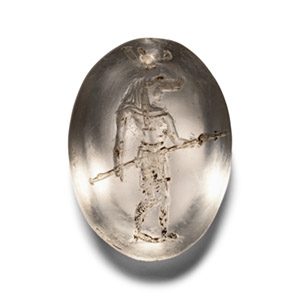
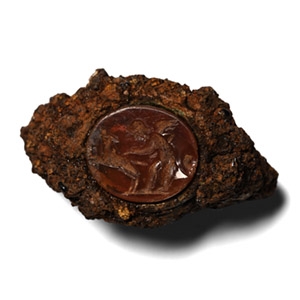
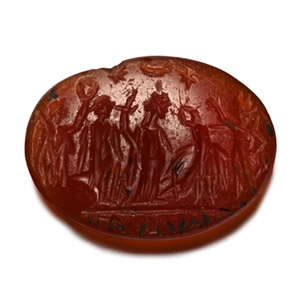
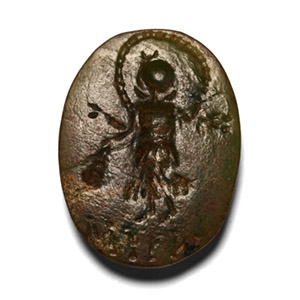
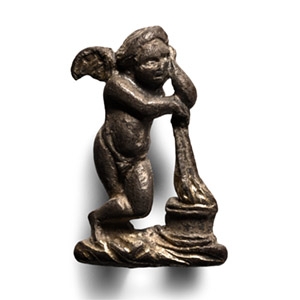
.jpg)

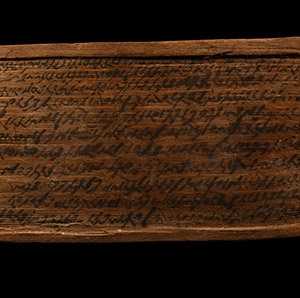
.jpg)
